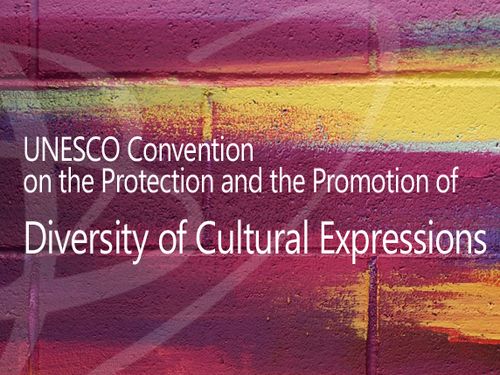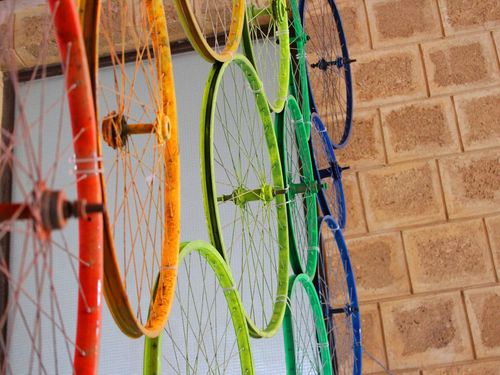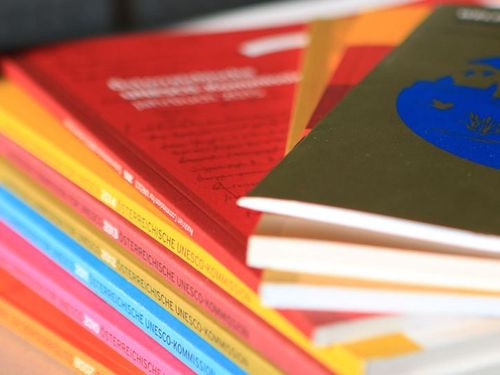Fellowship Austrian Commission for UNESCO: artistic mobility
From November 2021 to April 2022, Daria Tchapanova is a kültüř gemma! Fellow at the Austrian Commission for UNESCO. Within her video project she focuses on the topic of artistic mobility. A video work makes barriers to mobility visible through the voices of artists and cultural workers.
Fellowship Focus: Mobility of Cultural Actors
Artistic freedom is far-reaching and concerns, among other things, the mobility of artists and cultural workers. Reality shows that international artists or cultural workers face barriers of mobility when practising their work in Austria. They are often exposed to precarious living conditions or are already excluded in advance. Article 16 of the UNESCO Convention, Preferential Treatment, aims to promote the mobility of artists from the so-called Global South.
Daria Tchapanova's project does not offer legal solutions for artists and institutions, but is rather to be understood as a complement to the work of the Austrian Commission for UNESCO and to the overall discourse. Restrictions on artistic mobility become visible at political borders. This is the point of departure for the Fellowship, which visually presents the difficulties that political borders - both social and bureaucratic - entail through the voices of affected artists. The project is intended to show a video work, the working method is process-oriented, the final format is still open. The end result will be either a short film or a video installation.
Call for interview partners
The aim of the Fellowship is to shed light on different positions of artists and cultural workers who are confronted with barriers to artistic mobility in Austria. To this end, Daria Tchapanova is looking for interview partners who would like to share their experiences on this topic, in relation to visas, residency or similar. A special focus is on positions from the so-called Global South. Each interview (max. 30 min) will be rewarded with EUR 100,-. The entire call for applications is available in English as a download (below).
kültüř gemma!
is a project to promote migrant artistic work. Every year we award free work scholarships and fellowships to Viennese cultural institutions. In addition to the financial and non-material support of individual projects, kültüř gemma! sees itself as a cultural networking platform. Our goal is to establish migrant positions as a matter of course in the predominantly white cultural scene and to do justice to the plurality of the city in cultural life as well.
Austrian UNESCO Commission
The fellowship is located in the department "Diversity of Cultural Expressions". The work of the department is based on the UNESCO Convention on the Protection and Promotion of the Diversity of Cultural Expressions (2005). At the heart of the Convention is the safeguarding of an environment in which a diversity of art and culture can develop freely and is protected from a purely economic approach. In this sense, the department deals with various issues concerning the framework conditions of artistic and cultural creation, such as the mobility of art and cultural actors, fair working conditions in the arts and cultural sector, and participatory policy-making processes in the field.
About Daria Tchapanova
Daria Tchapanova (*1983 Bulgaria) lives and works as a visual artist in Vienna, Austria.
Her work explores different media, intervention, installation, video, photography, collage and graphic in relation to spatial contexts.
Daria likes to move in strange spaces, her work in different places has encouraged her to also work in the field of documentation. In doing so, she explores issues of social engagement, personal connection and the temporal appropriation of space. Mostly these works are inspired by collaborations. A white thread, a connecting element and interface between the artist and the space, is a visible and tangible aspect. She is currently exploring art and anthropology and how she can draw a line between two ways of thinking.
Downloads
- [Translate to EN:] 123 KB (pdf)
[Translate to EN:]
Related News
![[Translate to EN:] [Translate to EN:]](/fileadmin/user_upload/CAll.jpg)




